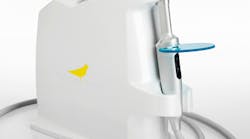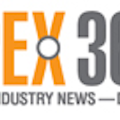Moving caries detection ‘into the 21st century’: ADA approves scanning procedure code D0600
Announcement comes as good news for Quantum Dental Technologies, makers of the Canary System
The American Dental Association (ADA) Code Maintenance Committee has approved the addition of a procedure code D0600 for caries detection. This new code recognizes the advances made in caries detection and provides dentists with the ability to use this code for this procedure in 2017.
The caries detection nomenclature of D0600 reads, “Non‐ionizing diagnostic procedure capable of quantifying, monitoring, and recording changes in structure of enamel, dentin and cementum.”
The new code was approved by the ADA Code Maintenance Committee Meeting in March and was posted to the ADA’s website on April 11. In the weeks that followed, manufacturers and the ADA worked together to clarify the application of the code.
The announcement was welcomed by Quantum Dental Technologies, the makers of the the Canary System, whose product fits the new nomenclature to the letter. The Canary System involves quantifying, monitoring, and recording changes in the structure of enamel, dentin, and cementum, and is a device that can be appropriate to use for this procedure code.
RELATED: Product Review—The Canary System by Quantum Dental technologies | By Pamela Maragliano-Muniz, DMD
“This new procedure code moves caries detection into the twenty-first century,” says Dr. Stephen Abrams, President of Quantum Dental Technologies. “Recognizing the value of technologies that can monitor, measure, and quantify changes in tooth structure now provides patients access to improved methods for treating caries. This code establishes the importance of ongoing examination of caries with appropriate modalities so that dentists can provide a wide range of treatment options and monitor outcomes. It offers patients and dentists another option that does not involve ionizing radiation to detect caries.”
In a press release, Quantum Dental Technologies noted that detection methods using visual examination; explorers and other tactile probes; fluorescence; and transillumination may not fall under the new code because of their inability to detect changes in all the tissues or to record and quantify changes in these tissues.
Obtaining a CDT code provides a US dentist with the ability to bill patients directly and bill third-party carriers and insurers using a specific code for this service. D0600 will be published in CDT 2017 and takes effect January 1, 2017.
Source: Canary Systems press release 20 May 2016



